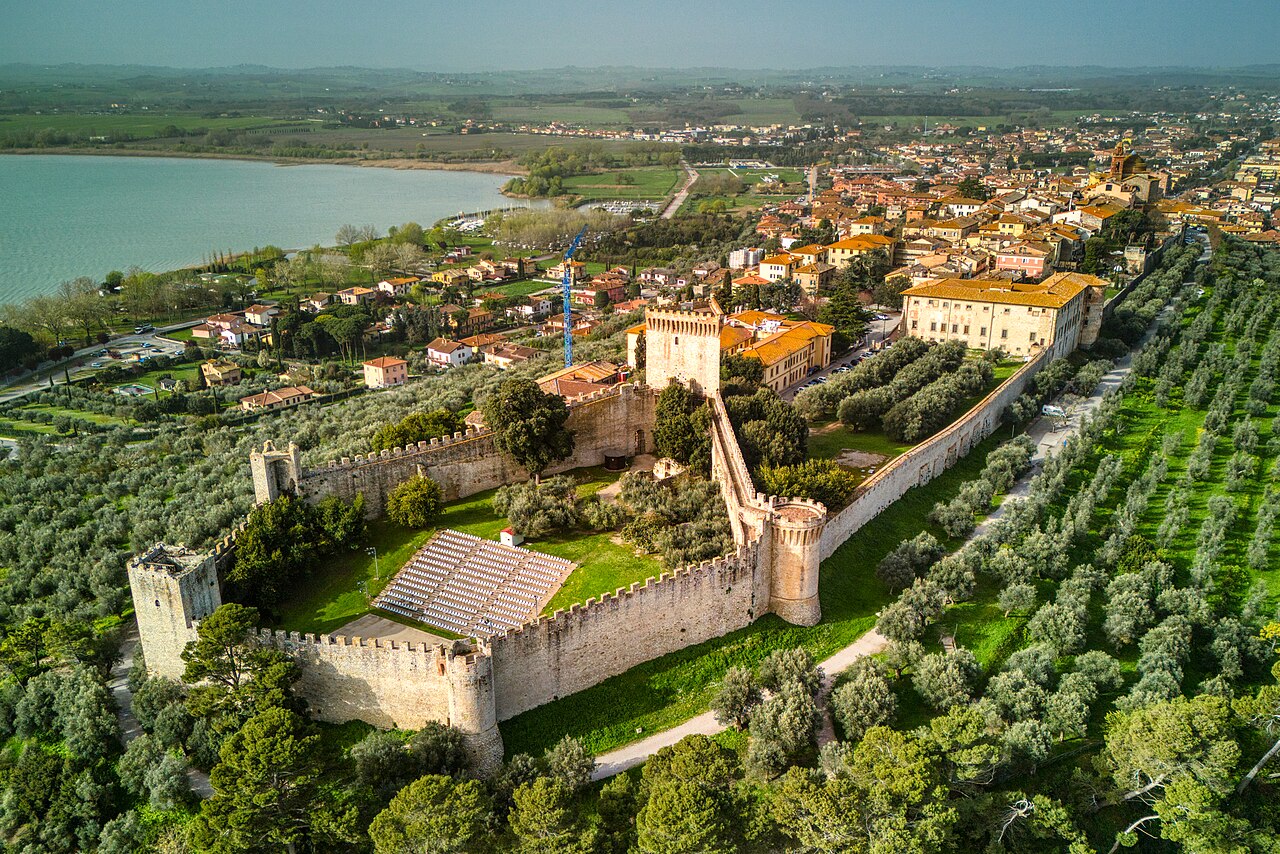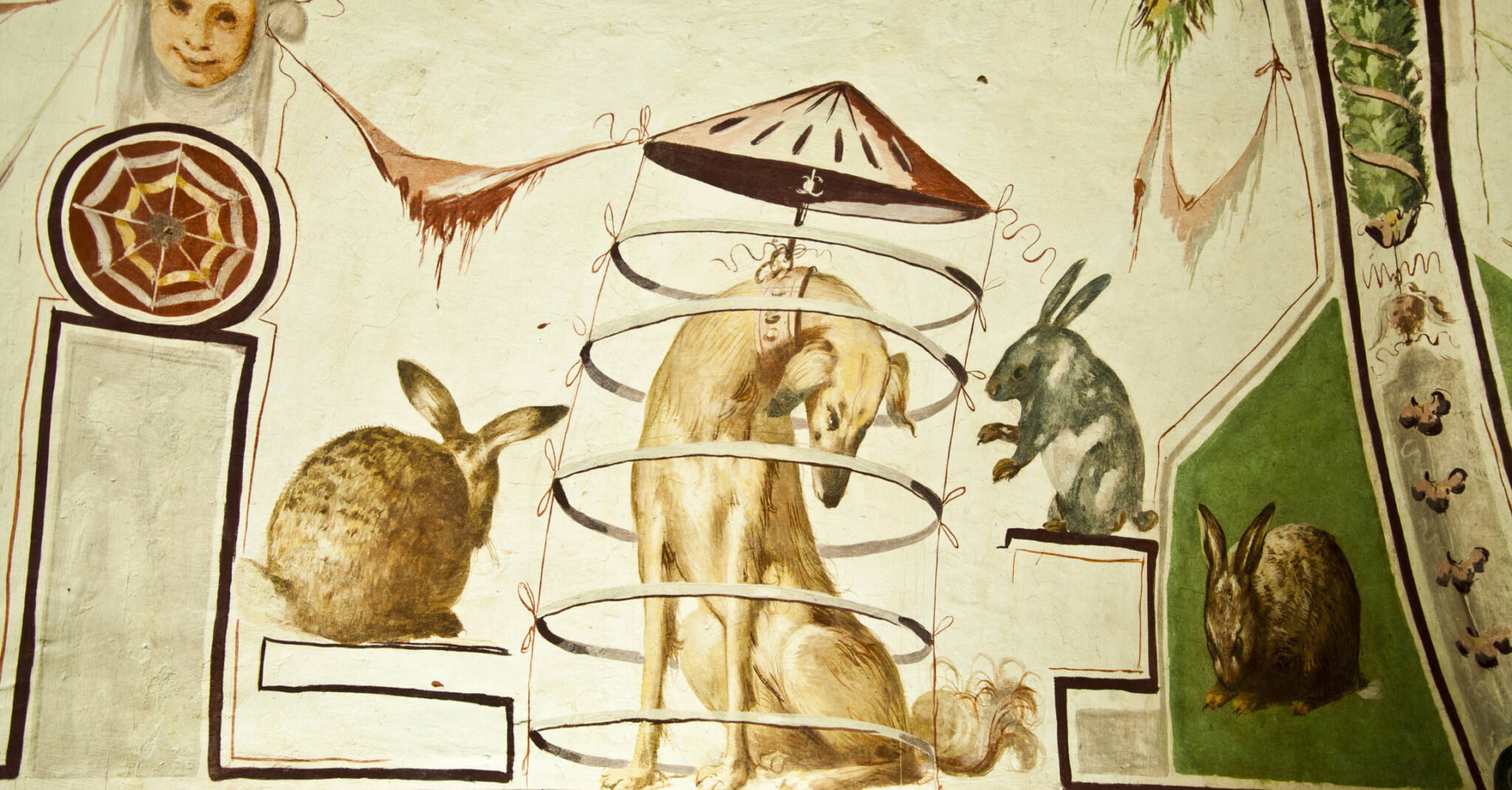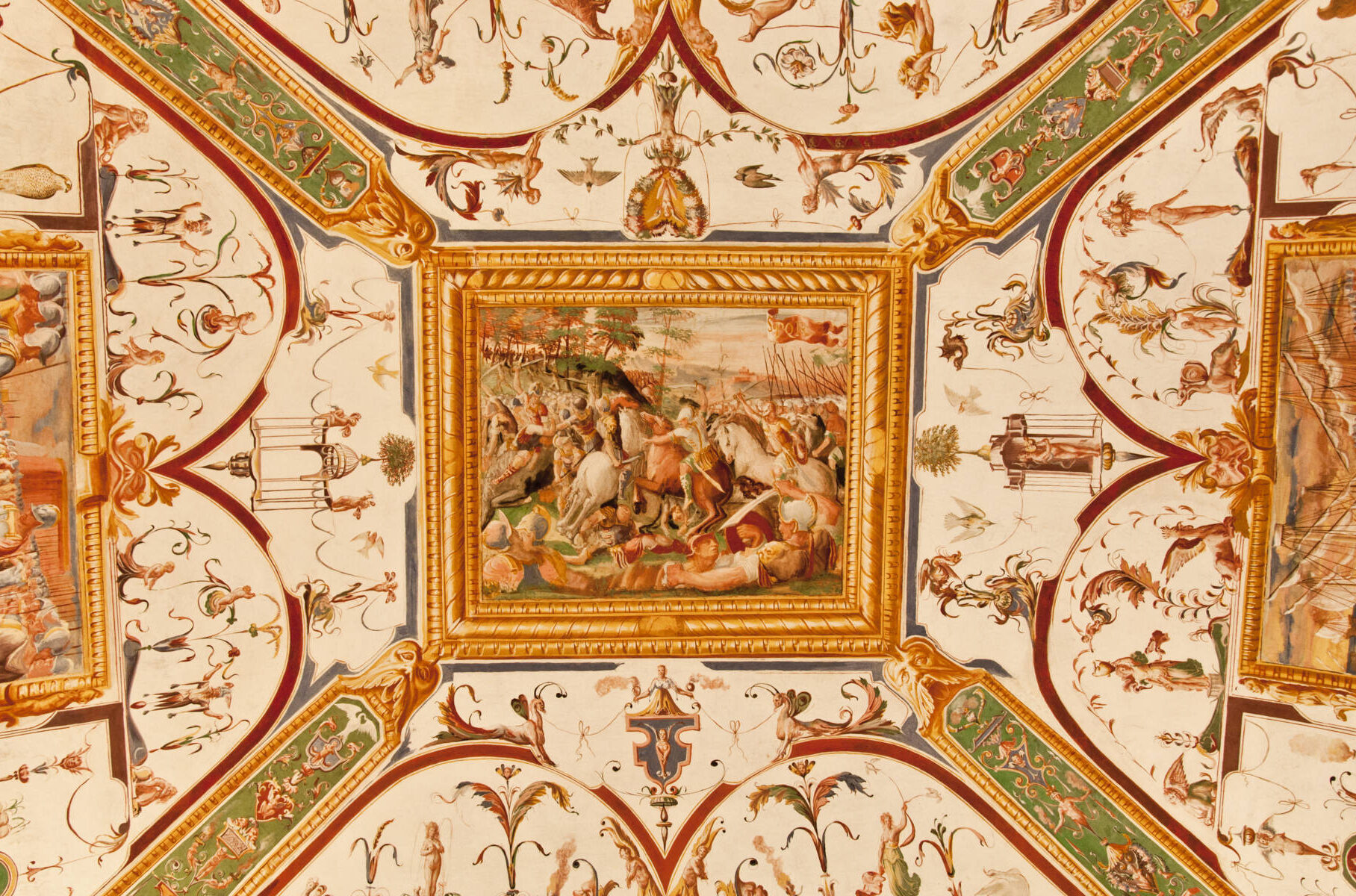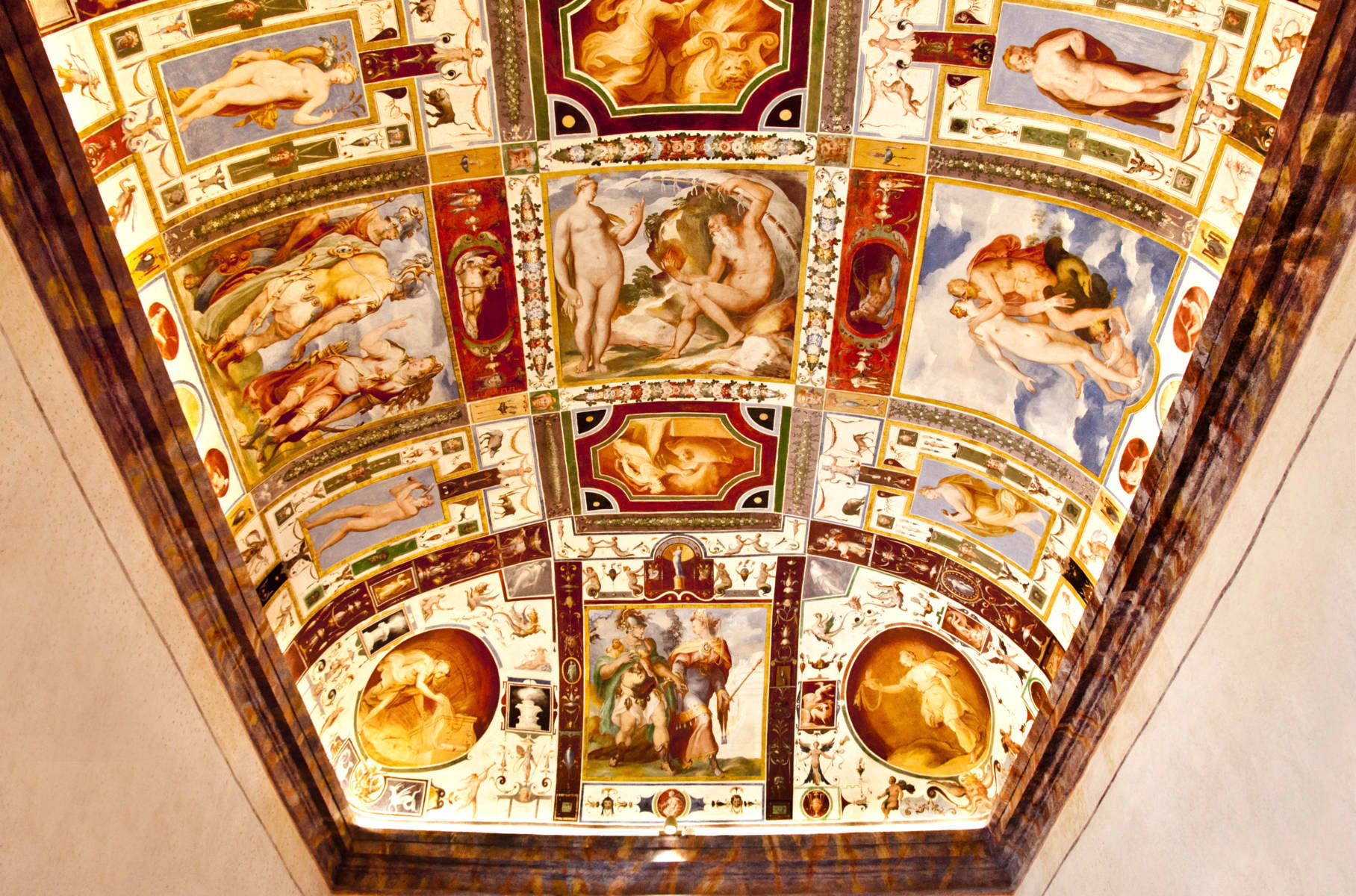Located at the edge of the walls of the suggestive Fortezza del Leone and built on a hunting tower house of the Baglioni family, the Ducal Palace of Corgna was the main residence of the marquises – later dukes – who governed Castiglione del Lago from 1563 to 1647.
The small palace – conceived by none other than Vignola and Galeazzo Alessi – has the shape of an L and was built on four floors. On the right side was the marquis’ study, equipped with a secret door that led, via a covered walkway, to the Rocca del Leone: in case of danger it could be used as an escape route.

But this was not the only secret hidden in the palace surrounded by the magnificent garden praised by the poet Cesare Caporali: under the throne room, as in the best of swashbuckling novels, there were three rooms defined as secret because they were reserved for private meetings. The latter were open to Perugian writers and artists, as well as political figures that the small state of the della Corgna family could dispose of: in fact, their actual existence is documented in the Letters of the court secretary Scipione Tolomei.
The decoration of these rooms also contributed to strengthening its reputation and making it even more desirable to see, suggested and created by the whimsical Caporali who, together with the aforementioned court secretary and Ascanio della Corgna himself, was part of the Accademia degli Insensati of Perugia. Caporali himself had been remembered, in the poem Viaje al Parnaso, by Miguel del Cervantes: the famous author of Don Quixote had fought Ascanio in the battle of Lepanto. Many attribute the meaning of the numerous figurative enigmas present in the secret rooms of Palazzo della Corgna to this particular connection.

Particolare degli affreschi del mondo alla rovescia. Foto di www.palazzodellacorgna.itToday the seat of the Municipal Library, the Hall of the World Upside Down, the Hall of the Arts and the Hall of the Metamorphoses present themes dear to the Renaissance that also hide esoteric meanings. In the first, together with Diana, Callisto, Prometheus, Ganymede and Narcissus – symbol of the unwary transgressors and the great punished – we find images in which the mouse catches the cat or the game hunts the hound: the world upside down warns about the subversion of the natural order if one does not respect one’s duties.
In the Hall of the Arts, unfortunately not well preserved, Music and Painting are represented according to the indications of the treatise by C. Ripa; in the third, finally, there are scenes taken from Ovid’s Metamorphoses, surmounted by the coat of arms of Fulvio della Corgna and Eleonora de Mendoza.
Those who wish to take the museum tour, which extends along the entire first floor, can enjoy eight frescoed rooms, in an inimitable mix of history, art and mystery. The rooms, frescoed between 1574 and 1590 by Niccolò Circignani, known as Pomarancio, and his entourage, depict the deeds of Ascanius (Hall of the Deeds of Ascanius), various mythological and literary themes (Hall of Paris, Hall of Phaeton, Hall of the Aeneid, Hall of the Gods, Hall of Pluto and Proserpina) and some historical episodes (Hall of the Battle of Trasimeno, Hall of Caesar).
Walking with your nose in the air towards the wonderful scenes painted by Pomarancio is undoubtedly an experience full of charm and mystery, capable of projecting the visitor towards a glorious past and fervent artistic and cultural production.
To visit Palazzo della Corgna: www.palazzodellacorgna.it
Eleonora Cesaretti
Latest posts by Eleonora Cesaretti (see all)
- The Deposition of Cannara, a work that ended up in oblivion - April 8, 2025
- Of devotion and chestnut woods: the village of Santa Restituta, a jewel to be discovered - February 11, 2025
- The secret rooms of the small Della Corgna palace - January 9, 2025



